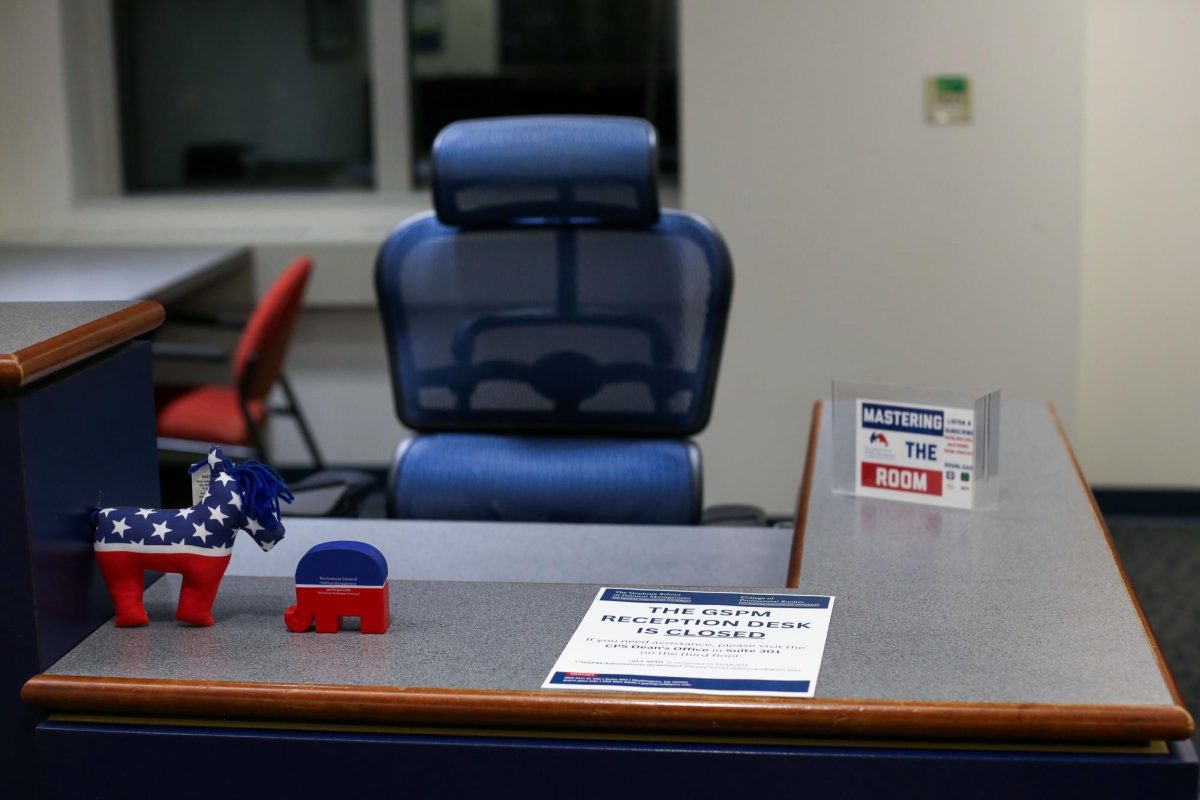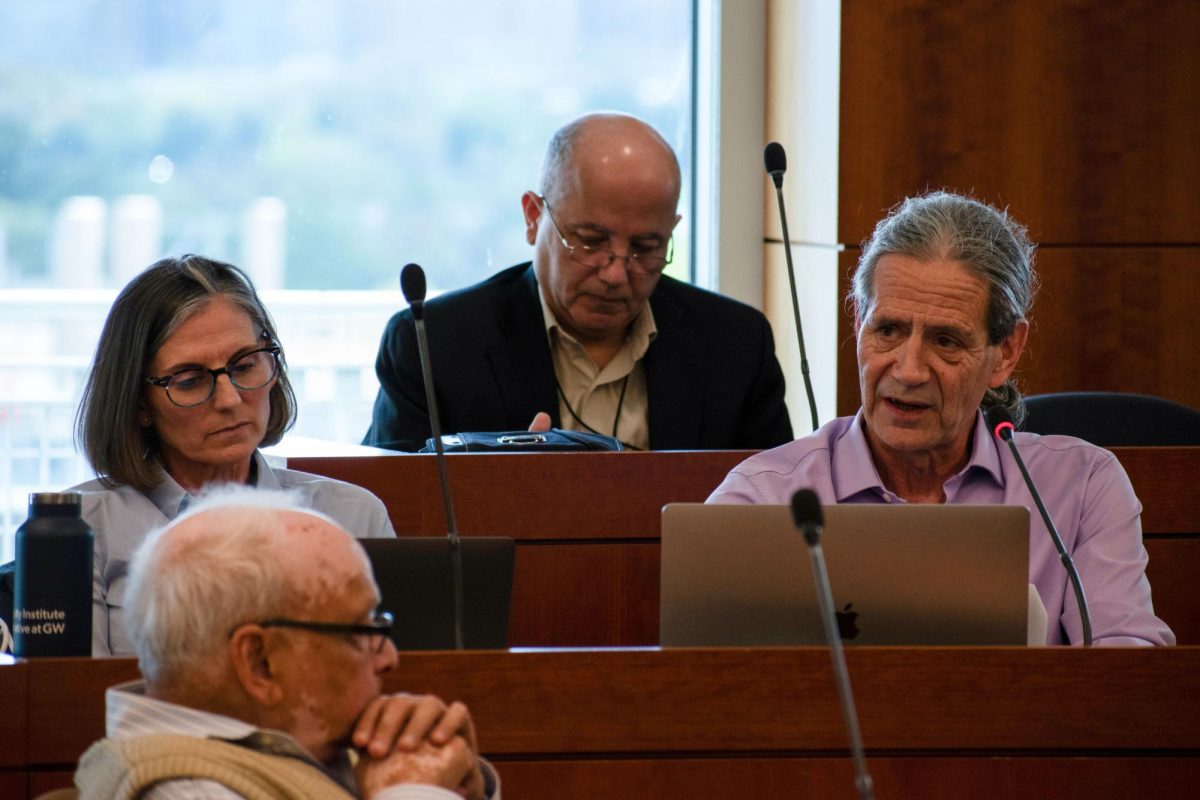Experts in higher education administration said GW’s decision to split the third federal stimulus package between students and institutional costs is in line with other colleges and universities.
Officials said earlier this month they will allocate $12.5 million from GW’s funding allocation under the American Rescue Plan for students who have faced financial hardship during the COVID-19 pandemic, while the remaining $12.4 million will help offset institutional costs, like lost revenue from fewer housing payments during remote learning last year. Experts said uncertainty over how campuses would operate during the fall semester delayed universities’ decisions on how and when they would allocate stimulus money.
GW’s plan to allocate the funding comes five months after the U.S. Department of Education announced that the University would receive about $25 million. The legislation required schools to spend at least half of the money on student-based grants.
“Given our foremost priority to protect the health and safety of our community, institutional aid was used to help offset the significant financial impact associated with the pandemic and our efforts to mitigate the spread of the coronavirus on campus,” Interim Provost Chris Bracey and Chief Financial Officer Mark Diaz said in an email to community members earlier this month.
President Joe Biden signed the $1.9 trillion stimulus package into law in March, which provided the financial support to GW through a third round of funding to the Higher Education Emergency Relief Fund.
GW spent all of the $9.1 million distributed under the CARES Act – which then-President Donald Trump signed into law last March – on student aid initiatives last May. Officials split the second round of stimulus between institutional costs and student aid last December under the Coronavirus Response and Relief Supplemental Appropriations Act.
Of GW’s 12 peer schools, 11 have indicated they will split the third round of government stimulus evenly between institutional costs and student aid grants, with one yet to make a public announcement. Of those 11 schools, 10 are still in the process of distributing those stimulus funds, and some are still distributing aid from the second round of stimulus.
Experts said the stimulus funding would help officials cover unexpected expenses they encountered throughout the pandemic, given the loss of housing revenue and additional costs involved with teaching online.
Anthony Bieda – the former executive director of the Kentucky Association of Career Colleges and Schools, an organization that represents schools in Kentucky – said he was “not surprised” that GW decided to split the government stimulus evenly instead of directing it all to students. He said officials needed to allocate funding for institutional costs because of the University’s loss of revenue during the pandemic and the logistical costs involved with returning to campus.
“As an institution, you have all these overhead costs that are not easy to get rid of unless you start laying off or firing people and closing buildings,” Bieda said.
Officials laid off 339 staff and temporarily froze employee salaries last year as part of a broader budget mitigation efforts during the height of the pandemic.
Bieda said reviewing grant applicants’ Free Applications for Federal Student Aid, also known as FAFSA, and federal Pell Grant status are the most effective ways to determine a student’s eligibility for need-based grants, which half of GW’s stimulus package will fund.
He said institutions should focus more on directing government stimulus money to students most affected by the pandemic, through grants, access to reliable services like internet broadband, personal computer lending and academic tutoring.
“The ultimate goal at the federal government level and also at the institutional level is to make sure that the pandemic does not cause displacement in students from participating in higher education,” he said.
Joseph Paris, an assistant professor of higher education at Temple University, said many institutions had to change how they spent government stimulus funding between the first and second rounds because of “unexpected expenses,” like costs for virtual learning technology, that were not immediately apparent when colleges received the first round of stimulus funding.
“Some of those costs were not fully realized at the time of the first stimulus, but those costs became more fully realized by the second,” Paris said. “And I think institutions were making decisions, and GW is no exception, to not only defray costs but also to hopefully stimulate new revenue by continuing helping students continue their educational careers.”
He said officials needed to take time to assess the need for funding from each department and unit within the University, contributing to the five-month gap between the ED’s announcement about GW’s package and the recent plans for allocation.
“There’s a layer of accounting that needs to take place so that the institution can understand more fully the costs incurred,” he said. “That may require budget heads across the institution to account for those costs.”
Paris added that GW’s decision to evenly split stimulus between institutional costs and student aid grants was “pretty typical” for larger institutions of higher education.
“In order for an institution to continue to provide the services that students need, in a safe way, there are some additional expenses associated with that,” he said.
Megan Schneider – the senior director for government affairs at the National Association of College and University Business Officers, an organization that represents leaders in higher education – said many institutions delayed their stimulus spending decisions because of “uncertainty” over how campuses would operate by the end of the summer semester.
“It was not super clear to a lot of campuses whether or not they’d be able to open physical space in the fall, or whether it would make sense to stay online or go hybrid,” Schneider said. “And for most campuses, it’s taken that long to sort of assess where the needs are and where resources could be allocated.”
She said the association “encourages” institutions to direct more stimulus funds toward student aid, student debt relief and unpaid tuition balances.
“For every single institution that gets an allocation, there is a certain amount that absolutely has to be spent on students,” she said. “So if they are spending any more than that, then that’s the institution’s choice, which is great.”








